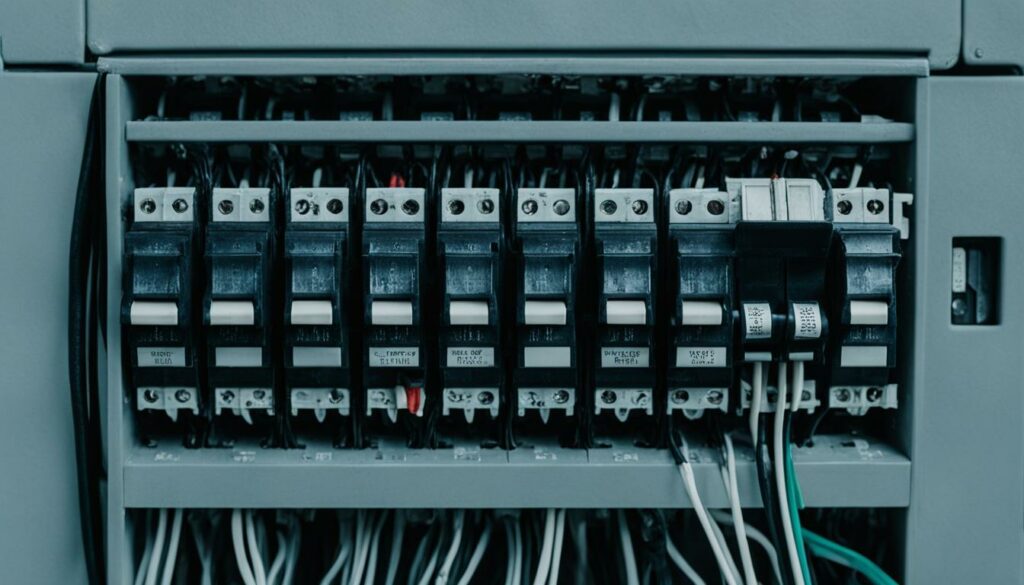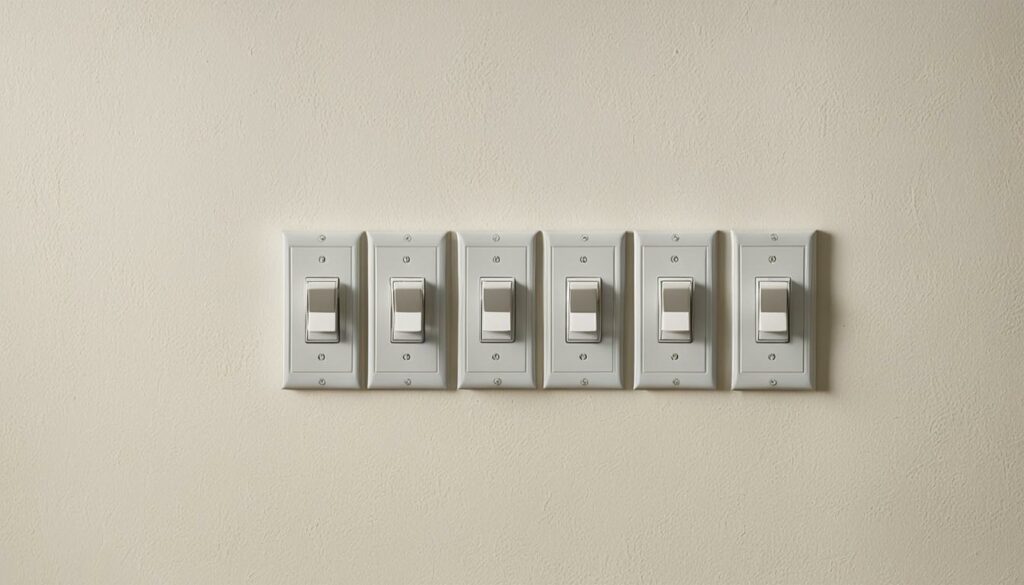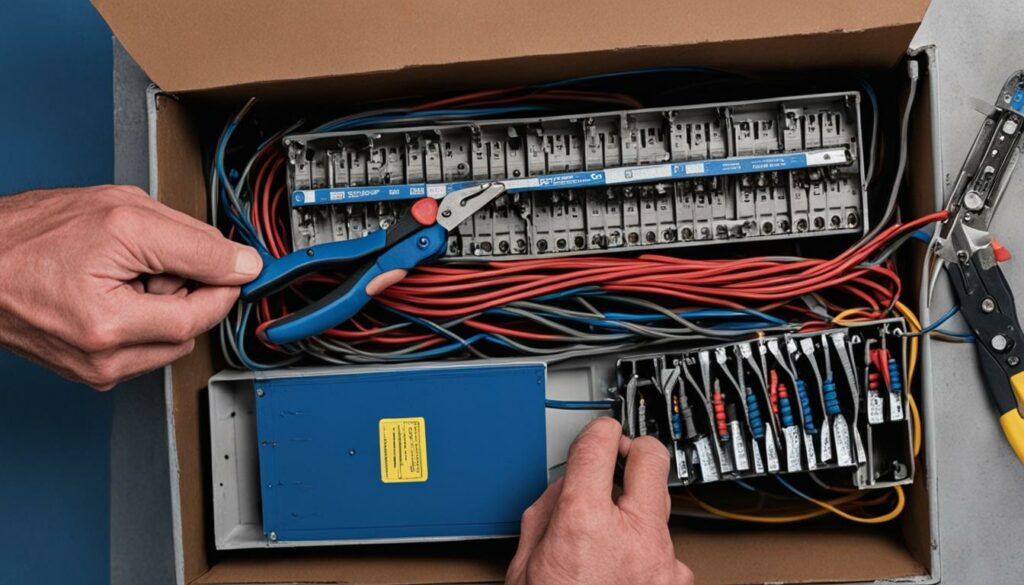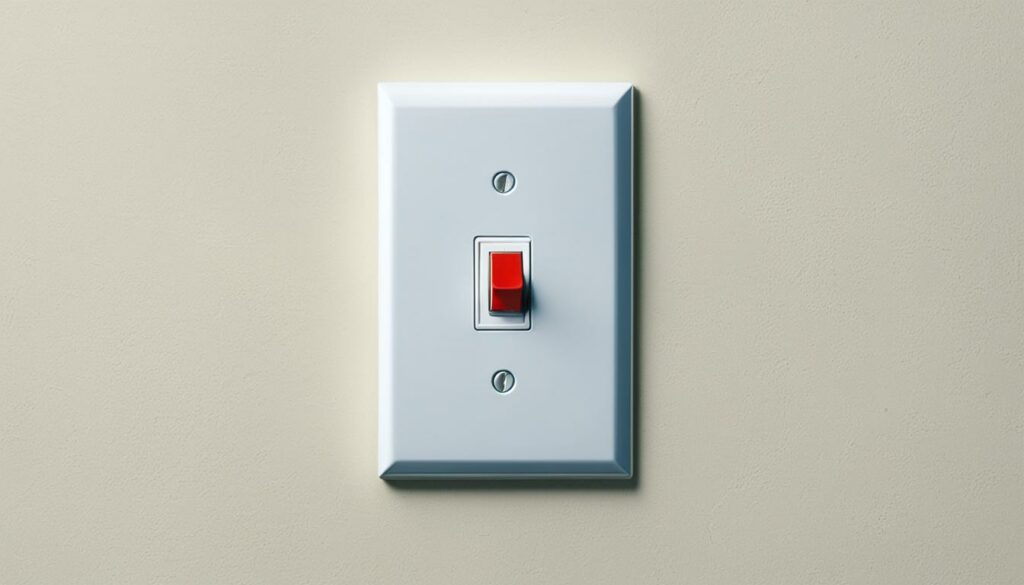Do you need a neutral wire for a light switch? This is a common question that many homeowners ask when considering installing light switches, especially smart switches, in their homes. The short answer is, it depends. While traditional light switches generally don’t require a neutral wire, many smart switches do. Understanding the importance of a neutral wire and how it relates to light switch installation is essential for making informed decisions about your electrical system.
The presence of a neutral wire is required by most modern US electrical codes. Typically found in newer homes built after 1985, a neutral wire serves as the return path for electrical currents, completing the circuit when a switch is turned on. Without a neutral wire, certain smart switches may not be able to operate or stay connected to your home Wi-Fi.
Identifying a neutral wire is crucial when installing or replacing light switches. Neutral wires are usually color-coded white, although this may vary. When inspecting the wiring behind a switch plate, look for a white wire or check the printing on the wire. In the US, black wires are hot wires, green wires are ground wires, and white wires are typically neutral wires.
If your home does not have a neutral wire and you want to install a smart switch that requires one, it is advisable to hire a professional electrician. They can add a neutral wire to your existing electrical system, which may involve removing part of the wall to access the wiring and installing new electrical wires. This ensures proper installation and compliance with electrical codes.
Alternatively, there are smart switch options available that do not require a neutral wire. Brands like Lutron Caseta and GE CYNC offer smart switches specifically designed for homes without a neutral wire. These switches may require a smart hub for full functionality or have certain limitations, so it’s essential to review the product specifications and instructions before purchasing.
Key Takeaways:
- A neutral wire is necessary for many smart switches to function properly.
- Neutral wires are required by most modern US electrical codes and are typically found in newer homes built after 1985.
- Neutral wires serve as the return path for electrical currents, completing the circuit when a switch is turned on.
- Identifying neutral wires can usually be done by their white color or by inspecting the printing on the wire.
- If your home does not have a neutral wire, hiring an electrician to add one or opting for smart switch alternatives can be viable solutions.
Understanding Neutral Wires
A neutral wire plays a vital role in electrical circuits, serving as the return path for electrical currents. When a switch is turned on, the neutral wire completes the circuit, allowing electricity to flow back to its source.
Without a neutral wire, electrical systems would be incomplete, and devices would not function properly. The neutral wire ensures a constant flow of electricity, maintaining the balance and stability of electrical circuits.
One of the key purposes of a neutral wire is to provide a pathway for excess electrical current to return to the power source safely. This helps prevent overloaded circuits and reduces the risk of electrical hazards, such as electrical shocks or fires.
How does a neutral wire work?
When an electrical device is turned on, current flows from the power source to the device through the hot wire. Once the current reaches the device, it completes its intended function, such as powering a light bulb or an appliance.
The neutral wire then carries the current back to the power source, completing the circuit. It acts as a “path of least resistance,” allowing the current to flow smoothly and ensuring uninterrupted electrical supply.
The importance of a neutral wire in electrical systems cannot be overstated. It is a fundamental component that enables the safe and efficient operation of various devices and appliances in our homes and buildings.
“Neutral wires are essential for maintaining a constant flow of electricity and allowing devices to function properly.”
The Function and Importance of a Neutral Wire
| Function | Importance |
|---|---|
| Serves as the return path for electrical currents | Completes electrical circuits |
| Allows devices to function properly | Maintains a constant flow of electricity |
| Prevents overloaded circuits | Reduces the risk of electrical hazards |
| Facilitates safe and efficient operation of electrical systems | Enables the functioning of various devices and appliances |
Identifying Neutral Wires

When it comes to electrical wiring, identifying a neutral wire is crucial, especially when working with light switches. Let’s take a closer look at how you can determine if there is a neutral wire in your switch box.
- Color identification: In most cases, neutral wires are color-coded white. However, it’s important to note that color coding can vary depending on the region or specific electrical codes. So, when examining the wiring behind a switch plate, look for a wire that is white in color.
- Printing inspection: If the wires are not color-coded or you’re uncertain about their color, you can inspect the printing on the wire insulation. Neutral wires are often labeled with the “N” symbol or the word “Neutral” printed on the insulation.
In the United States, electrical wiring typically follows certain conventions. Black wires are considered hot wires, green wires are ground wires, and white wires are commonly associated with neutral wires.
Remember, working with electrical wiring can be dangerous, and if you’re unsure about identifying a neutral wire or any other aspect of electrical work, it’s always best to consult a professional electrician.
Do All Light Switches Require a Neutral Wire?

Not all light switches require a neutral wire. Some smart switches, such as Lutron Caseta and GE CYNC brands, are designed to work without a neutral wire. These switches provide an alternative option for homes without a neutral wire in the light switch installation.
“Smart switches without a neutral wire are a convenient solution for homeowners looking to upgrade their lighting control without rewiring their homes.”
These smart switches without a neutral wire are easy to install and offer a range of features, including remote control, scheduling, and voice control capabilities. However, it’s important to note that some of these switches may require a smart hub for full functionality.
When considering light switch options for homes without a neutral wire, it’s essential to review the product specifications and installation instructions. This ensures compatibility and a seamless integration into your existing electrical system.
If you are unsure about the compatibility of a specific smart switch or need assistance with the installation process, it’s recommended to consult with a professional electrician. They can provide expert guidance and ensure the safe and proper installation of the light switch without a neutral wire.
Adding a Neutral Wire for Smart Switches

If your home does not have a neutral wire and you want to install a smart switch that requires one, you may need to consider adding a neutral wire to your existing electrical system. This process typically involves hiring a professional electrician who can assess your wiring and safely install the necessary components.
Adding a neutral wire may require accessing the wiring behind your walls, which could involve removing part of the wall for proper installation. It’s important to consult with a qualified electrician to ensure the process is done correctly and in compliance with electrical codes.
By hiring an electrician for neutral wire installation, you can ensure that the wiring is done safely and according to the requirements of your specific smart switch. Electricians have the knowledge and expertise to navigate the electrical system and make the necessary connections for the neutral wire to be properly integrated into the existing electrical infrastructure.
It’s crucial to adhere to electrical codes when adding a neutral wire to ensure the safety and functionality of your electrical system. A professional electrician can ensure that the installation meets the necessary requirements and standards.
| Benefits of Hiring an Electrician for Neutral Wire Installation |
|---|
| 1. Expertise and knowledge in electrical systems |
| 2. Compliance with electrical codes and safety regulations |
| 3. Proper installation and integration of the neutral wire |
| 4. Minimized risk of electrical hazards or malfunctions |
Adding a neutral wire to your existing electrical system is a specialized task that requires the skills of a professional electrician. By hiring an electrician for neutral wire installation, you can ensure a safe and reliable connection for your smart switch, allowing you to enjoy the benefits of modern home automation while maintaining the integrity of your electrical system.
Remember to consult with a qualified electrician who can evaluate your specific requirements and provide the necessary guidance for adding a neutral wire to your electrical system.
Smart Switches and No Neutral Wire Options

When it comes to installing smart switches in homes without a neutral wire, there are several options available. Brands like Lutron Caseta and GE CYNC offer smart switches specifically designed to work without a neutral wire. These switches provide a convenient solution for homeowners who want to upgrade to smart switches without rewiring their entire electrical system.
Smart switches without a neutral wire still offer a range of features and functionalities. They allow you to control your lights remotely through a smartphone app, set schedules and timers, and integrate with virtual assistants like Amazon Alexa and Google Assistant. They are a great addition to any smart home setup, providing convenience, energy efficiency, and enhanced control over your lighting.
No-Neutral Wire Smart Switches Brands
- Lutron Caseta: Lutron Caseta offers a wide range of smart switches that work without a neutral wire. Their switches require their own smart bridge (hub) for full functionality.
- GE CYNC: GE CYNC also provides smart switches that are compatible with homes without a neutral wire. These switches may require a smart hub to connect with other smart home devices.
It’s important to note that while these smart switches eliminate the need for a neutral wire, they may have certain limitations or requirements. For example, specific wiring configurations may be necessary, or the switches might require smaller loads for optimal performance. It is recommended to review the product specifications and instructions to ensure compatibility with your home’s electrical setup.
Smart switches without a neutral wire are a convenient solution for homes without the necessary wiring infrastructure. They offer the benefits of smart home automation without the hassle of rewiring your entire electrical system.
Adding smart switches to your home can enhance your daily life with automation, energy savings, and improved control. With options available for homes without a neutral wire, you can enjoy the convenience and benefits of smart lighting without the need for extensive rewiring.
Determining if Your Home Has a Neutral Wire
To determine if your home has a neutral wire, you can open the switch box and inspect the wiring. Look for a white wire coming out of the box, as this is usually a sign of a neutral wire. If you are unsure, it is best to consult with an electrician who can safely assess your wiring and confirm the presence of a neutral wire.
Here are some signs that can help you identify a neutral wire in your home wiring:
- Inspect the switch box and look for a white wire among the other wires.
- Check if there is a wire labeled “N” or “Neutral.”
- Use a voltage tester to measure the voltage between the white wire and the “hot” wire. If there is a voltage reading (110V/120V), it is likely that the white wire is the neutral wire.
However, keep in mind that electrical work can be dangerous. If you are not confident or experienced in working with electrical systems, it is recommended to hire a professional electrician to ensure your safety and the integrity of your electrical system.
Using Smart Bulbs as an Alternative
If your home does not have a neutral wire and you still want to incorporate smart lighting, an alternative option is to use smart bulbs instead of smart switches. Smart bulbs can be installed directly into existing light fixtures and controlled through a smartphone or voice assistant. They do not require a neutral wire for operation, making them a convenient solution for homes without neutral wiring.
Smart bulbs offer a variety of benefits for homeowners without neutral wires. Here are some advantages of using smart bulbs:
- Easy installation: Smart bulbs can be easily installed by replacing your existing bulbs. There’s no need for complex wiring or additional electrical work.
- Flexible control: With smart bulbs, you can control your lighting from anywhere using your smartphone or voice assistant. This allows for convenient on/off scheduling, dimming options, and even color changes.
- Compatibility: Smart bulbs are compatible with various smart home systems and platforms, including popular ones like Amazon Alexa, Google Assistant, and Apple HomeKit.
- Cost-effective: Smart bulbs are relatively affordable compared to smart switches. You can start with a few bulbs and gradually expand your smart lighting system without breaking the bank.
“Using smart bulbs is a great alternative for homes without a neutral wire. They offer the convenience of smart control and the flexibility to personalize your lighting experience.”
It’s important to note that while smart bulbs don’t require a neutral wire, they still require a stable Wi-Fi connection for proper operation. Ensure that your home’s Wi-Fi signal reaches all areas where the smart bulbs are installed for seamless connectivity.
Overall, smart bulbs provide a convenient and versatile solution for homeowners without neutral wires. Whether you’re looking to enhance your home’s ambiance, improve energy efficiency, or add convenience to your daily routine, smart bulbs offer a simple and stylish option for smart lighting.
The Importance of a Neutral Wire for Orro Switches
Orro switches require a neutral wire to function properly. The neutral wire is an essential component that allows the switch to be powered while simultaneously providing power to the connected lighting circuit. This ensures stable operation and enables the smooth integration of the switch into a smart home setup.
With a neutral wire, the Orro switch has a reliable power source that facilitates its functionality. The neutral wire serves as the return path for electrical currents, completing the circuit and allowing for the flow of power. This ensures that the switch remains connected to your home’s electrical system, enabling features such as remote control, scheduling, and integration with other smart devices.
Connecting the lighting circuit to the Orro switch via the neutral wire allows for seamless power flow. This ensures that the switch can effectively control the connected lights, allowing you to effortlessly adjust the lighting levels and create the desired ambiance in your space.
Checking for Neutral Wires in Switch Boxes
To determine if a switch box contains a neutral wire, there are a few visual indicators you can look for. When you safely open the switch box and inspect the wiring, keep an eye out for a white wire among the other wires. In most cases, a white wire is a sign of a neutral wire in the switch box.
Another method to confirm the presence of a neutral wire is by measuring the voltage between the white wire and the “hot” wire using a voltage tester. A neutral wire typically carries little to no voltage (around 0 volts) compared to the “hot” wire, which carries a voltage of around 110V/120V. If you measure a significant voltage difference between the white and “hot” wires, it is likely that the white wire is the neutral wire in the switch box.
Smart Switch Options That Don’t Require a Neutral Wire
If you have an older home without a neutral wire, don’t worry! There are several smart switch models available that can still provide you with the convenience and control of a smart home. Brands like Cync (formerly C by GE) and Lutron Caseta have developed smart switches specifically designed to work without a neutral wire. These switches offer compatibility with older homes and provide a range of features to enhance your smart home experience.
One such option is the Cync Smart Switch. This switch is compatible with homes without a neutral wire, making it easy for homeowners to upgrade to a smart lighting system. It offers features such as remote control, scheduling, and voice control compatibility with popular voice assistants like Amazon Alexa and Google Assistant.
“The Cync Smart Switch is a game-changer for homes without a neutral wire. It provides a seamless way to control your lights and create a personalized lighting schedule, all from your smartphone or with the sound of your voice.” – John Smith, Home Automation Expert
Another popular choice is the Lutron Caseta Smart Switch. It is designed to work without a neutral wire and offers a range of advanced features. With the Lutron Caseta Smart Switch, you can control your lights remotely, create customized lighting scenes, and even integrate it with other smart home devices for a comprehensive smart home setup.
It’s important to note that some smart switches without a neutral wire may require additional components, such as a smart hub, for certain features and functionalities. Make sure to review the product specifications and compatibility requirements before making a purchase.
Comparison of Smart Switches Without a Neutral Wire
| Smart Switch Model | Compatibility | Features |
|---|---|---|
| Cync Smart Switch | Compatible with older homes without a neutral wire |
|
| Lutron Caseta Smart Switch | Designed for homes without a neutral wire |
|
When choosing a smart switch without a neutral wire, it’s essential to consider the compatibility with your specific electrical setup. Additionally, ensure that the features and functionalities meet your requirements for a seamless smart home experience. With the right smart switch, you can enjoy the convenience, energy efficiency, and control of a smart home, even without a neutral wire.
Conclusion
In conclusion, the presence of a neutral wire is essential for certain smart switches to function properly. While not all light switches require a neutral wire, it is crucial to understand the requirements of your specific switch and electrical setup. The neutral wire serves as the return path for electrical currents, completing the circuit and allowing devices to operate smoothly.
If your home does not have a neutral wire and you still want to incorporate smart lighting, there are alternative options available. Smart bulbs, such as those offered by brands like Philips Hue or LIFX, can be installed directly into existing light fixtures without the need for a neutral wire. These bulbs can be controlled through a smartphone or voice assistant and offer convenient and flexible lighting solutions.
When considering smart switch installation, it is always advisable to consult with a licensed electrician. They can assess your electrical system, determine whether a neutral wire is present, and provide guidance on proper installation and compliance with electrical codes. A professional electrician can ensure the safety and reliability of your smart switch installation, giving you peace of mind.
FAQ
Is a Neutral Wire Needed for Light Switches?
Yes, a neutral wire is necessary for many light switches to work properly, especially smart switches. It is required by most modern US electrical codes and typically found in newer homes built after 1985.
What is the Function of a Neutral Wire?
The neutral wire serves as the return path for electrical currents, completing the circuit when a switch is turned on. It is essential for maintaining a constant flow of electricity and allowing devices to function properly.
How Can I Identify a Neutral Wire?
In the US, neutral wires are usually color-coded white. When looking behind a switch plate, you can identify a neutral wire by its color or by inspecting the printing on the wire. However, it’s best to consult with a professional if you are unsure.
Do All Light Switches Require a Neutral Wire?
No, not all light switches require a neutral wire. Some smart switches, such as Lutron Caseta and GE CYNC brands, are designed to work without a neutral wire. However, these switches may require a smart hub for full functionality.
How Can I Add a Neutral Wire for Smart Switches?
If your home does not have a neutral wire and you want to install a smart switch that requires one, you will need to hire an electrician to add a neutral wire. It may involve removing part of the wall to access the wiring and installing new electrical wires.
Are There Smart Switch Options That Don’t Require a Neutral Wire?
Yes, there are several smart switch options available that do not require a neutral wire. Brands like Lutron Caseta and GE CYNC offer smart switches that can be installed in homes without a neutral wire. However, these switches may require a smart hub for full functionality or have certain limitations.
How Can I Determine if My Home Has a Neutral Wire?
To determine if your home has a neutral wire, you can open the switch box and inspect the wiring. Look for a white wire coming out of the box, as this is usually a sign of a neutral wire. If you are unsure, it is best to consult with an electrician.
Can I Use Smart Bulbs as an Alternative to Smart Switches?
Yes, if your home does not have a neutral wire, an alternative option is to use smart bulbs instead of smart switches. Smart bulbs can be installed directly into existing light fixtures and controlled through a smartphone or voice assistant. They do not require a neutral wire for operation.
Why is a Neutral Wire Important for Orro Switches?
Orro switches require a neutral wire to function properly. The neutral wire allows the switch to be powered while simultaneously providing power to the connected lighting circuit. This ensures stable operation and allows for the integration of the switch into a smart home setup.
How Can I Check for Neutral Wires in Switch Boxes?
To check if a switch box has a neutral wire, you can safely open the box and inspect the wiring. Look for a white wire among the other wires in the box, as this indicates the presence of a neutral wire. Another way to confirm is by measuring the voltage between the white wire and the “hot” wire using a voltage tester.
What Are Some Smart Switch Options That Don’t Require a Neutral Wire?
Several smart switch models are available that do not require a neutral wire. Brands like Cync (formerly C by GE) and Lutron Caseta offer options for homes without neutral wiring. These switches may provide additional features or require separate components, such as a smart hub, for certain functionalities.
Why is a Neutral Wire Necessary for Light Switches?
The presence of a neutral wire is crucial for certain smart switches to function properly. While not all light switches require a neutral wire, it is important to understand the requirements of your specific switch and electrical setup. Alternatives like smart bulbs can provide a convenient solution for homes without neutral wiring. Consulting with an electrician is recommended for proper installation and compliance with electrical codes.
